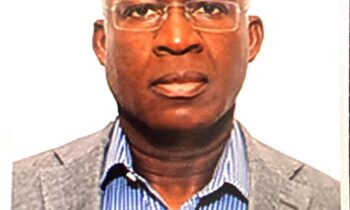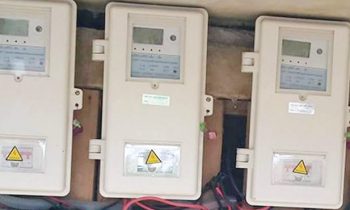
The sector is simply not working
Despite the restructuring of the electricity industry from a centralised to a market-based system, establishment of a sector regulator, private sector participation, and the introduction of an appropriate pricing methodology, NESI has witnessed increasing tariffs, revenue shortfalls, and increasing government support, all of which were contrary to the industry envisaged at the onset of the reform programme. Many observers have concluded the sector is simply not working as expected. The high inefficiencies associated with poor electricity supply mean more resources are used than should be required, and, in some cases, cross-ownership of generation and distribution assets stifles choice and competition, and thereby worsens electricity supply.
The reform, comprised of horizonal and vertical unbundling, creation of a market system, and privatisation of PHCN successor companies carved out of the former NEPA, ostensibly to enhance efficiency by leveraging the forces of demand and supply, has failed to force private investors to render operations efficient, mobilise investment to address infrastructure gaps and expand the grid with electricity supply worse today than ten years ago. Electricity tariff is also higher, yet government has been compelled to commit more scarce public resources to NESI than it had to when the industry was solely publicly-owned and controlled.
This is primarily the result of inefficient operations characterised by high system losses and high cost of services. Although these problems may predate privatisation, the private investors have not tackled them and have instead prioritised short-term profit over long-term investment in infrastructure, a strategy that serves to reduce capacity and limit the industry’s contribution to wealth and job creation.
In such a situation, rather than tackling the underlying issues that have compounded inefficiency, the increase in tariff simply shores up revenues, and profits. However, those very costs are attributable to the inefficiencies and distortions to operations and market structure that have combined to blunt competition and choice rendering NESI wholly inefficient. The new tariffs simply worsen the problem thereby engendering a vicious circle. The reality is deteriorating energy security as well as a lack of competitiveness of commercial and industrial consumers. Logically, this has adverse consequences on domestic production and the economy.
Regulation, which in principle is meant to be light-handed and performance-based, has failed to deliver improvements in services and mobilise investment. Indeed, it could be argued that regulators have not taken full cognisance of the inefficiencies when setting the goalposts. Consumers are of the view that there is regulatory capture as only interests of the private investors are advanced with constant tariff increases without commensurate contribution to improving electricity supply. Addressing these issues will require a multi-pronged approach that goes beyond tariff increases.
Impact of volatile macroeconomic indices and inefficient operations on tariff
The Minister of Power in a recent interaction with the National Assembly said, “Power sector crisis has defied all solutions”.[ Adelabu: Power sector crisis has defied all solutions, The Cable, April 23, 2024] This statement, perhaps borne out of exasperation, can only be ascribed to lack of tangible results after numerous interventions by government. It is also tantamount to abdicating responsibility as the solutions proffered have not been based on a detailed analysis of problems and measures adopted. As indicated above, the interventions target symptoms and not the root causes of the problems.
Failing to take cognisance of the panoply of issues and challenges that undermine the mutually-reinforcing flows of energy and money ensures the failure of any tariff increase to constitute a cost-reflective tariff. As things stand, such an increase cannot improve sector liquidity, mobilise investment, improve electricity services. In other words, without a comprehensive grasp of the systemic and sector issues, and full understanding of the mechanics of the tariff model, where the issues come together, tariff increases will not address NESI’s problems. On this trajectory, more tariff increases may follow for the generality of consumers.
The variety of endogenous and exogenous factors that affect production and supply of electricity services converge in the electricity pricing model. The model itself, a synthesis of cost recovery and profit maximisation objectives with consideration given to efficiency improvement and investment mobilisation, is quite sound. However, two things go against it: regulatory laxity and adverse macroeconomic conditions. The model does what it is meant to do but less than rigorous application of sector regulation and the noise introduced into pricing by a volatile exchange rate, inflation, and interest rate, together combine to cause costs to diverge from set tariff. Persistent variations of the underlying parameters necessitate constant review of the model, causing tariff to be unstable. Unstable prices and the consequential revenue shortfalls negatively impact operations and financial performance, making it difficult to mobilise investments thereby causing a vicious circle. Thus, without addressing the sources of the industry inefficiencies, tariff increases will not work, and the electricity problem will only be compounded.
Tariff model and elusive cost-reflective tariff
Prices have been increased on numerous occasions since the introduction of the MYTO in 2008, yet cost reflectivity remains elusive. Understanding the tariff model gives an insight into why the attainment of cost reflectivity is largely impossible as long as the industry is inefficient and macroeconomic indices remain unstable.
The model provides for the recovery of the operating and capital costs incurred by the generation, transmission and distribution of electricity. Operating costs include personnel, O&M, and energy costs. Capital costs are comprised of the return on investment and return of investment, which provide for profit and depreciation, respectively. Other assumptions include operational characteristics such as losses, grid stability, etc. After arriving at a tariff, an uplift is added to the tariff to allow for regulatory and other sector-related costs. Macroeconomic variables are factored into the model to ensure economic reality. Rather than ensure stability, these variables cause price instability.
First, electricity tariff is set ex ante, in other words before expenditures are incurred. The nature of NESI and the need for price certainty mean the price must be determined ahead of operations to enable the mobilisation of funding for operations and grid development. This assumption is crucial as it is expected that the utilities will incur all the allowed costs. Deviations from costs and operational parameters will distort tariffs with dire consequences. When parameters are exceeded, leading to efficient and better than expected outcomes, utilities keep the surplus that accrues as an incentive. It appears there are no serious consequences for violation of economic regulation.
Second, with inadequate energy accounting and metering systems in place, it is difficult for revenue to be assured with certainty. Apart from the distortions this introduces to the liquidity and viability of NESI, it puts upward pressure on price. The reason for this is simple. Tariff is set to deliver the required revenue to meet operating and capital expenditures, plus profit. With revenue taken as given, and assumptions made on power to be generated and the quantity of electricity supplied, the model computes a notional price based on the manipulation of the revenue formula, R=PxQ;and …=R-C where R,P,QX denotes , efficient price quantity, profit and cost, respectively
First, information asymmetries give utilities the upper hand with respect to data on revenues and costs required in tariff determination, meaning the regulator cannot easily verify submissions of operators. Second, any diminution of the electricity quantity leads to price increase, and there are many factors, such as losses, unplanned outages, and system collapses that regularly lead to this outcome.
Consequently, the tariff will be unstable and tend upwards if (a) factors such as system losses and grid collapses remain high; (b) cost of services incurred in the production and supply of electricity are not efficient; (c) the exchange rate, inflation, and other macroeconomic parameters are unstable and volatile; (d) the price of key fuel denominated in US Dollars causing a currency mismatch and amplifying revenue risks and; (e) investment for grid stability and expansion are not forthcoming.
Contrary to what some say, the electricity tariff in Nigeria has not been as low as they would have us believe. It has, from time to time, exceeded 10 US cents per kWh. This price level, however, has not been sustainable due to worsening operational and cost inefficiencies, exchange rate, inflation and interest rates given reliance of NESI on import of equipment. As of 2023, with worsening exchange rate, electricity tariff per kWh in Nigeria stood at US$0.05 compared to US$0.02, US$0.03, US$0.05, US$0.07, US$0.15 and US$0.18 for Angola, Egypt, Saudi Arabia, India, South Africa and United States, respectively (Cost of Electricity by Country 2024, World Population Review).
What can be inferred from these prices is that if the electricity tariff in Nigeria is comparatively high contrary to position of operators who deem it very low and not cost-reflective, then costs must be comparatively high, which again points to the need to tackle inefficiencies, not raise tariffs. The implication is that by increasing the tariff, inefficiencies and high cost are rewarded. This disincentivises change, whereas rectification of a skewed cost structure and inefficient operations are more important to improvement of electricity supply.
Tariff increases will not be enough
In addition to the importance of price to a firm’s objectives, be it profit or revenue maximisation, and the crucial role it plays in the efficient allocation of resources, matching demand and supply, it influences consumer and producer decision-making, and signals efficiency especially in a competitive market. In a regulated electricity market, where the price is set by regulator, the emphasis is on stability and affordability rather than the dynamic interplay between demand and supply seen in a deregulated market. For precisely this reason, the importance of price cannot be downplayed. Improvement in electricity services must start with improvements in operational efficiencies.
It follows from what has been said, however, that given the factors involved, a holistic approach to addressing to the power problem that necessarily goes beyond tariff increases is required. Critical to this approach are loss reduction, cost and operational efficiencies, appropriate risk mitigation, etc.
Reducing the unacceptably high system losses in NESI, arguably the highest in the world, must be considered a matter of urgency and top priority. The benefits of this will exceed what will accrue to NESI. It will boost government earnings as it will free up significant volumes of natural gas used in thermal plants to generate electricity, and free up unnecessary investments in transmission facilities.
Other key measures that will boost electricity are optimisation of surplus and stranded capacities, not to mention access to cheap and long-term investment capital. Promotion of competition for efficient operations is important where competition is feasible and desirable (the generation and retail electricity segments). And where competition is not feasible and undesirable (transmission and distribution), regulation must be more effective.
NESI’s poor performance is both the cause and effect of low growth of the economy. The importance of energy in economic growth cannot be overstated. NESI needs to be repositioned for the country to embark on the low emission energy path to deliver Net Zero, it needs to play a key role in economic diversification to deliver accelerated growth and balanced development, and access to clean and affordable energy for approximately 100 million citizens who do not have access to grid electricity must be increased. The task might seem like what Hercules faced when staring at the stables of Augeas, but if we are to avoid the consequences of a double-edged sword that tariff increase represents, namely, simultaneous reduction of public expenditure and worsening of the electricity problem, then a holistic approach beyond a tariff hike is needed. The main objective of the tariff hike is to fill the gaping hole left by the withdrawal of government support, the subsidy, and not to address the issues that underpin the seemingly intractable electricity problem. As is, the increase will make it difficult to improve electricity supply, accessibility, and competitiveness of the economy. These outcomes are crucial for wealth and job creation that are necessary to address the plethora of social and economic challenges





